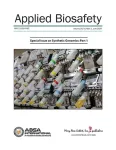(Press-News.org) BLOOD CANCER
Sylvester Expert Endorses FDA’s Recent Cancer Drug Approval
Mikkael Sekeres, M.D., chief of the Division of Hematology at Sylvester, who specializes in treating leukemia and myelodysplastic syndromes (MDS), expressed his support for the Food and Drug Administration’s recent approval of the drug imetelstat. The drug, a telomerase inhibitor, treats cancer-related anemia in patients with lower-risk MDS. “With approval of imetelstat to treat myelodysplastic syndromes, we finally have another approach we can offer to patients with profound and debilitating anemia from their cancer,” Sekeres said.
Study May Lead to More Patients Receiving Stem-Cell Transplants
A new use for an older drug may enable more patients with high-risk blood cancers to receive transplanted stem cells from unrelated, partially matched donors, according to new research from Sylvester. The repurposed drug, cyclophosphamide, could help expand the donor pool, especially for underrepresented racial and ethnic groups who often struggle to find fully matched donors. Antonio Jimenez Jimenez, M.D., Sylvester’s primary investigator for the cyclophosphamide studies, called the findings “transformational.”
Recent FDA Committee Vote Could Speed Multiple Myeloma Drug Approval
An FDA Committee voted in April to approve minimal residual disease (MRD) as a clinical endpoint when evaluating drugs for multiple myeloma. The unanimous vote was based primarily on Sylvester-led research spearheaded by C. Ola Landgren, M.D., Ph.D., director of its Myeloma Research Institute. His study, published May 20 in the journal Blood, shows “a very tight correlation between MRD and clinical outcomes both in newly diagnosed and relapsed patients,” he explained. If the FDA adopts the committee’s recommendations, which it usually does, the result will be a special, accelerated pathway for drug approval based on MRD.
Landgren Highlights Quadruple Therapies, Future of Multiple Myeloma Treatment
Landgren also highlighted quadruple therapies and the rapidly evolving treatment landscape for multiple myeloma at the recent American Society of Clinical Oncology (ASC0) annual meeting. He explained how newer combination therapies are “great improvements for patients and deliver deep responses” against multiple myeloma, the second most common blood cancer. Quadruple therapy involves adding a monoclonal antibody drug to the “backbone” of small-molecule drugs commonly used to treat this cancer.
CANCER TRAINING BARRIERS
Foreign-Trained Female Oncologists Face Multiple Forms of Discrimination
New research from Sylvester and other top-tier cancer centers presented recently at ASCO 2024 shows that female physicians who trained outside the U.S. or in Puerto Rico faced more challenges and reported higher levels of gender or race/ethnicity-based discrimination than their male counterparts. “Society still sees us as inferior to men and that translates beyond our gender to also include our race or ethnic background,” said Coral Olazagasti, M.D., a thoracic medical oncologist at Sylvester and lead presenter at the ASCO meeting.
CANCER EDUCATION
Sylvester’s Estelamari Rodriguez Recognized as GRACE Patient Educator of Year
Estelamari Rodriguez, M.D., has been honored with the Patient Educator of the Year award from Cancer GRACE (Global Resource for Advancing Cancer Education). The award was presented last month in recognition of Rodriguez’s work to break down language barriers worldwide by creating Spanish-language educational content about lung cancer for patients and caregivers. Rodriguez, a Latina bilingual thoracic oncologist at Sylvester, has seen firsthand how language barriers often prevent Spanish-speaking patients from receiving optimal care.
CANCER & DRUG ACCESS
Study: Access to Targeted Lung Cancer Drug Is Cost-Prohibitive Globally
A Sylvester study examining the cost-effectiveness of the immunotherapy drug durvalumab for lung cancer showed that the drug exceeded official cost thresholds in the U.S. and three other countries: Brazil, Singapore and Spain. The findings could help guide drug-pricing strategies to reduce financial burdens and increase the number of patients who benefit from treatment, said Gilberto Lopes, M.D., Sylvester’s chief of Medical Oncology and director for International Affairs.
CANCER & LIFESTYLE MEDICINE
Initiative Promotes Lifestyle Modifications to Help High-Risk Cancer Patients
A Sylvester initiative offers personalized lifestyle modifications and support programs to people at elevated cancer risk due to genetic mutations, including BRCA and Lynch syndrome. The High-Risk Lifestyle Medicine, Prevention and Digital Health Program is part of Sylvester’s Diamond Hereditary Cancer Prevention Initiative, funded by a $5-million gift from the Diamond family. “The latest evidence suggests modifiable behaviors within each person’s control, like regular exercise and following a healthy diet pattern, can attenuate overall cancer risk,” said Tracy E. Crane, Ph.D., co-lead of Sylvester’s Cancer Control Program.
on the InventUM blog and follow @SylvesterCancer on X for the latest news on its research and care.
# # #
END
COLUMBUS, Ohio – Adults who continuously played organized sports through their youth have fewer symptoms of anxiety and depression than those who never played or those who dropped out, a new study finds.
And those who dropped out of sports had poorer mental health than those who never played at all.
But many more people drop out of youth sports than play continuously until they are 18, said Chris Knoester, senior author of the study and professor of sociology at The Ohio State University.
“If you play and stick with sports, it’s ...
We often think of species as separate and distinct, but sometimes they can interbreed and create hybrids. When this happens consistently in a specific area, it forms what’s known as a hybrid zone. These zones can be highly dynamic or remarkably stable, and studying them can reveal key insights into how species boundaries evolve—or sometimes blur. In a new study published in Evolution, researchers at the University of Illinois Urbana-Champaign describe a hybrid zone between two manakin species in Panama that ...
In its first special issue on Biosafety and Biosecurity Considerations of Synthetic Genomics, the first part of a two-part special issue of the peer-reviewed journal Applied Biosafety focuses on the growing availability of customizable nucleic acid sequences and genomes from commercial sources. The issue also describes the advancements in desktop synthesis devices that enable the creation of on-demand nucleic acids. Click here to read the special issue now.
The rapid technological advancements described in part one of this two-part special issue are raising concerns among biosecurity experts and policymakers. The manuscripts in this issue explore the challenges, opportunities, and ...
By using a carbonated — rather than a still — water-based solution during the concrete manufacturing process, a Northwestern University-led team of engineers has discovered a new way to store carbon dioxide (CO2) in the ubiquitous construction material.
Not only could the new process help sequester CO2 from the ever-warming atmosphere, it also results in concrete with uncompromised strength and durability.
In laboratory experiments, the process achieved a CO2 sequestration efficiency of up to 45%, meaning that nearly ...
Disability studies has gained prominence in recent years, transforming fields ranging from design to literary studies with insurgent approaches to access and representation. The newest volume of Osiris, “Disability and the History of Science,” extends this movement to ask how disability has been a central, if unacknowledged, force in the scientific disciplines and the history of science. The volume examines the many roles that disability and disabled people have played throughout the history of science, calling attention to the shaping of scientific knowledge production by disability.
Editors Jaipreet Virdi, Mara Mills, and Sarah F. Rose, in their introduction ...
AlphaFold is an outstanding example of artificial intelligence’s computational capabilities in accurately predicting intricate protein structures. A new Review article explores AlphaFold’s recent advancements and its potential impact on predictive medicine. The article is published in the peer-reviewed journal AI in Precision Oncology. Click to read the articles now.
Vivek Subbiah, MD, from the Sarah Cannon Research Institute, and coauthors, describe a shift toward predictive medicine, in which AI, integrated with genomic data, ...
CHAMPAIGN, Ill. — The human body has sophisticated defenses against the deposition of calcium minerals that stiffen heart tissues, researchers at the University of Illinois Urbana-Champaign and collaborators at UCLA Health and the University of Texas at Austin found in a new study that provides the first detailed, step-by-step documentation of how calcification progresses.
“Heart disease is the leading killer annually — about 18 million deaths per year — and that number is growing. A large proportion is the result of calcification,” said study leader Bruce Fouke, a U. of I. professor of earth ...
Quantum computers have the potential to be revolutionary tools for their ability to perform calculations that would take classical computers many years to resolve.
But to make an effective quantum computer, you need a reliable quantum bit, or qubit, that can exist in a simultaneous 0 or 1 state for a sufficiently long period, known as its coherence time.
One promising approach is trapping a single electron on a solid neon surface, called an electron-on-solid-neon qubit. A study led by FAMU-FSU College of Engineering Professor Wei Guo that was ...
(Boston) — AL (immunoglobulin light chain) amyloidosis is a rare disease that often results in progressive organ dysfunction, organ failure and eventual death.
Clonal plasma cells in the bone marrow secrete free light chains into circulation. These light chains are part of immunoglobulins, also called antibodies. But in this disease, light chains misfold and aggregate into amyloid fibrils that deposit in organs and tissues.
In a review article of AL amyloidosis “Systemic Light Chain Amyloidosis,” Vaishali Sanchorawala, MD, director of the Amyloidosis Center at the Chobanian & ...
Excessive heat across the United States is making this summer a season of sweat. Perspiration and its evaporation are crucial to keeping us cool when things get hot. But our understanding of how sweat evaporates is limited to the profuse phases of the process, when our bodies are coated in a sticky film or even pools of perspiration. Relatively is little is known about the dynamics behind initial phases of sweating, when tiny droplets are emitted by individual sweat glands and then quickly evaporate.
“There are mechanical engineering researchers around the world, myself included, who are devoted to understanding the different parameters of droplet behavior on ...






